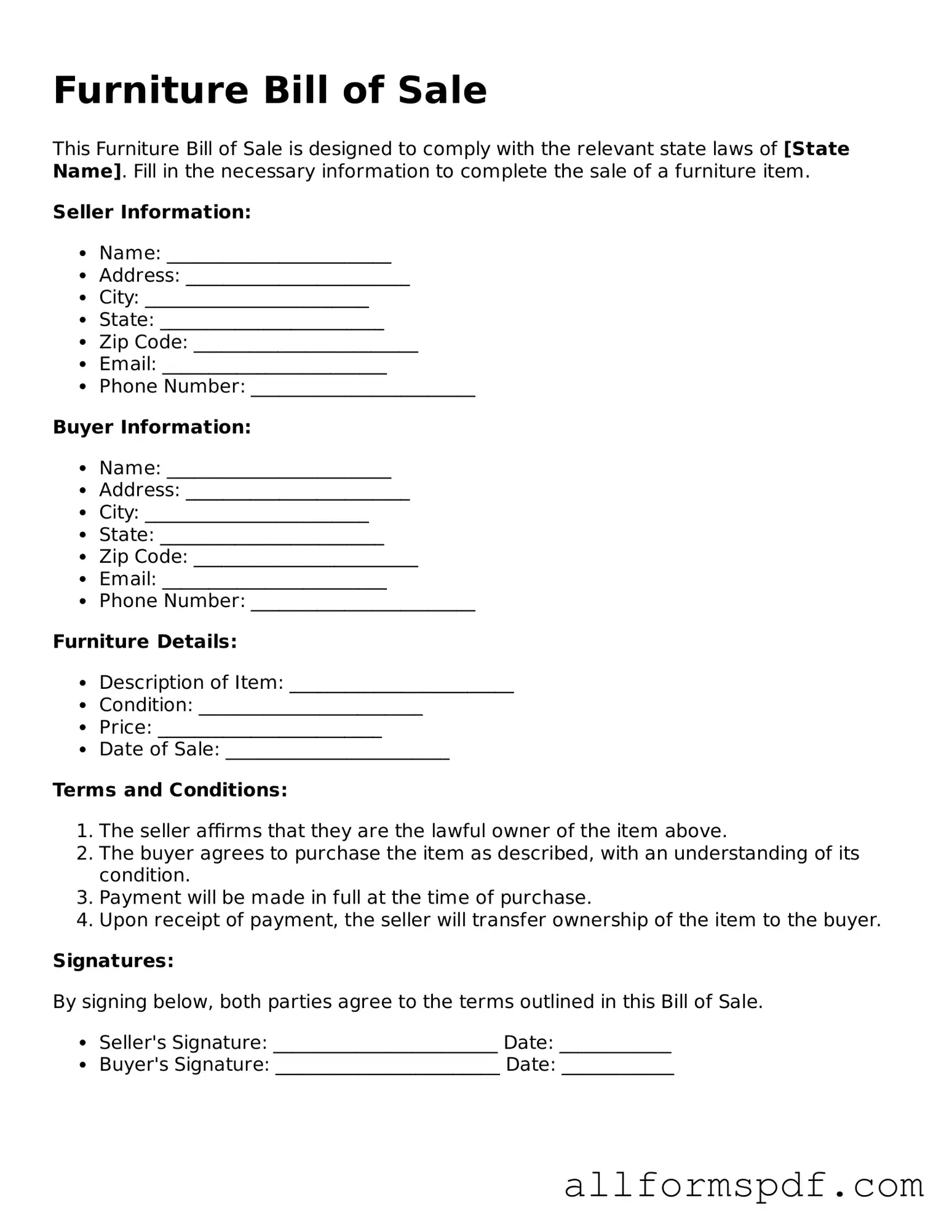Completing a Furniture Bill of Sale form can seem straightforward, but many individuals make common mistakes that can lead to complications later. One frequent error is failing to include the complete name and address of both the buyer and seller. This information is crucial for establishing the legitimacy of the transaction and ensuring that both parties can be contacted if necessary.
Another mistake involves not accurately describing the furniture being sold. Vague descriptions can lead to misunderstandings about the condition, brand, or specific items included in the sale. It is essential to provide detailed information, including the type of furniture, its condition, and any identifying features.
Some people neglect to include the sale price. Omitting this critical detail can create disputes over the agreed amount. Clearly stating the price helps to confirm the terms of the transaction and can serve as a reference in case of future disagreements.
Additionally, failing to sign the document is a common oversight. Both parties must sign the bill of sale to validate the agreement. Without signatures, the document may not hold up in a dispute, leaving both parties vulnerable.
Another area where mistakes often occur is in the date of the transaction. Not recording the correct date can lead to confusion about when the sale took place, which can be important for warranty claims or legal purposes.
People sometimes forget to provide any necessary disclosures about the furniture. If the item has defects or is sold "as is," this should be clearly stated. Transparency can prevent potential legal issues down the line.
It is also common to overlook the need for witnesses or notarization, depending on state requirements. Some jurisdictions may require a witness signature or notarization to make the bill of sale legally binding. Failing to adhere to these requirements can invalidate the document.
Finally, many individuals do not keep a copy of the completed bill of sale. Retaining a copy is essential for both the buyer and seller as it serves as proof of the transaction and the terms agreed upon. This document can be crucial for future reference or in case of disputes.
